When it comes to plants for privacy, it’s my view that the plant needs to be evergreen, have attractive foliage, respond well to pruning and have no prickles. Plants that can be used for privacy can be categorised into 3 types: Hedges, Informal screens and climbers. Some of the plants on this list can be used in pots on balconies and porches to provide privacy also.
We are located in South-Eastern Australia. About 1 hour east of Melbourne so these are our favourites for our climate. This list is by no means exhaustive, simply just our personal favourites.
Large Hedges & Informal Screens
All of these plants may be used as informal screens on larger properties or kept well trimmed in a smaller suburban garden.
Lilly pilly
There are 3 types of lilly pilly that we love to use as a privacy screen or hedge: Acmena, Syzigium and Waterhousea. All have attractive lush green foliage and respond very well to pruning.
Lilly pillies are a rainforest plant, so are perfect for adding privacy in areas that are shaded. However they can also be grown in full sun. Very versatile privacy plants!
Acmena smithii- Common lilly pilly
Acmena smithii (Common lilly pilly) is an attractive small tree. It will grow to 3-5m (9-16ft) if left to it’s own devices. More commonly it is pruned to a height of 1.8-2.2m (6-7ft). The foliage is a shiny deep green with almost pink new growth. In summer it will produce small white fluffy flowers, these are followed by edible pink berries. The berries make quite a nice jam.
Acmena smithii is an excellent choice for smaller gardens in the suburbs, maintaining them at around 2 m in height. Plants should be planted 60cm (2ft) apart. There are many new varieties available that may require less pruning or have other desirable characteristics, We prefer the old fashioned tried and true, common variety.
Trim twice a year to maintain as a clean formal hedge. We find if we prune in early summer and late autumn there isn’t too much foliage to clean up, most can be left on the ground as added mulch.
Note: Acmena smithii can also be known as Syzygium smithii. If you see it labeled so, they are the same plant.
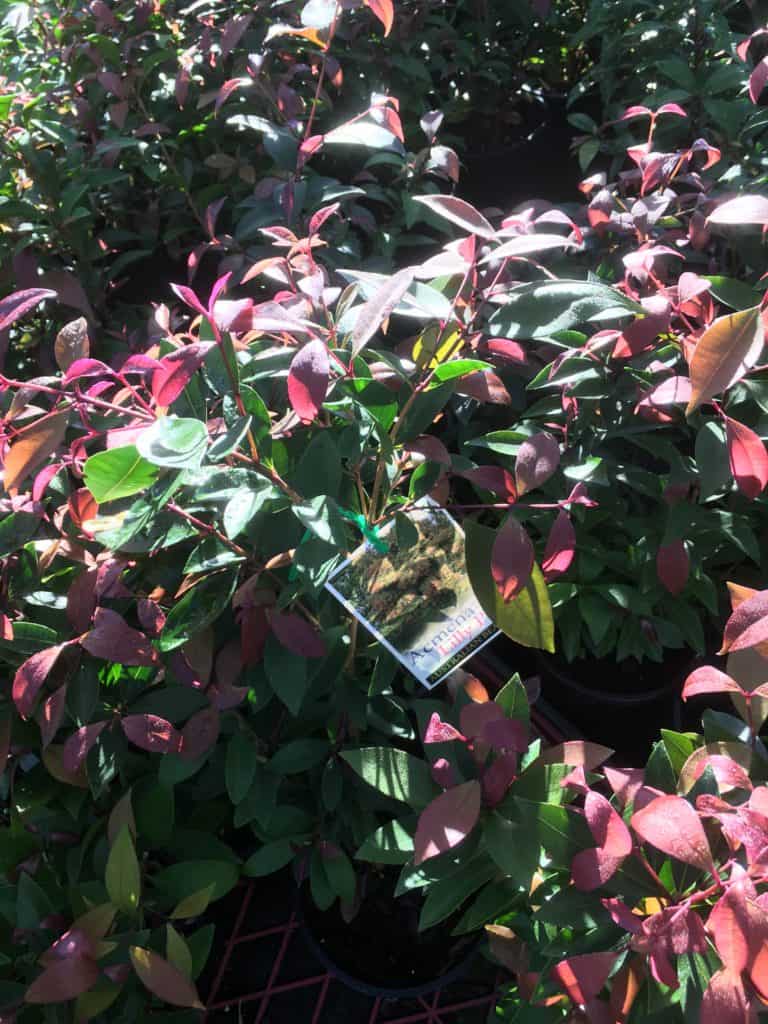 Acmena smithii- Lilly Pilly our nursery
Acmena smithii- Lilly Pilly our nursery
Waterhousea floribunda- Weeping lilly pilly
Waterhousea floribunda (Weeping Lilly Pilly) is an attractive large tree. It has deep glossy green leaves that are quite long. The new growth will sometimes sprout almost red (usually in late autumn & winter), whilst others are a limy green. Waterhousea is a much larger growing lilly pilly. It grows 8-10m (26-32ft) if left unpruned. In summer it also produces soft, small white flowers followed by green hazelnut sized berries.
Weeping lilly pilly is more suited to larger blocks where it can be allowed to flourish into a large informal hedge. The plants should be planted about 1m (3-4ft) apart. This should force the plants to compete with each other and hopefully only grow to about 3m (10ft).
This lilly pilly whilst growing quite large if used as a single specimen tree can also be grown quite successfully in large pots. The lush green weeping foliage can form quite a nice screen on smaller patios and porches. Remember if keeping in a pot, to fertilise and water regularly.
Waterhousea can also be more tolerant of frost than syzigium australe which is the next lilly pilly on our list.
If your interested in propagating some waterhousea for your own hedge check out our waterhousea propagation guide.
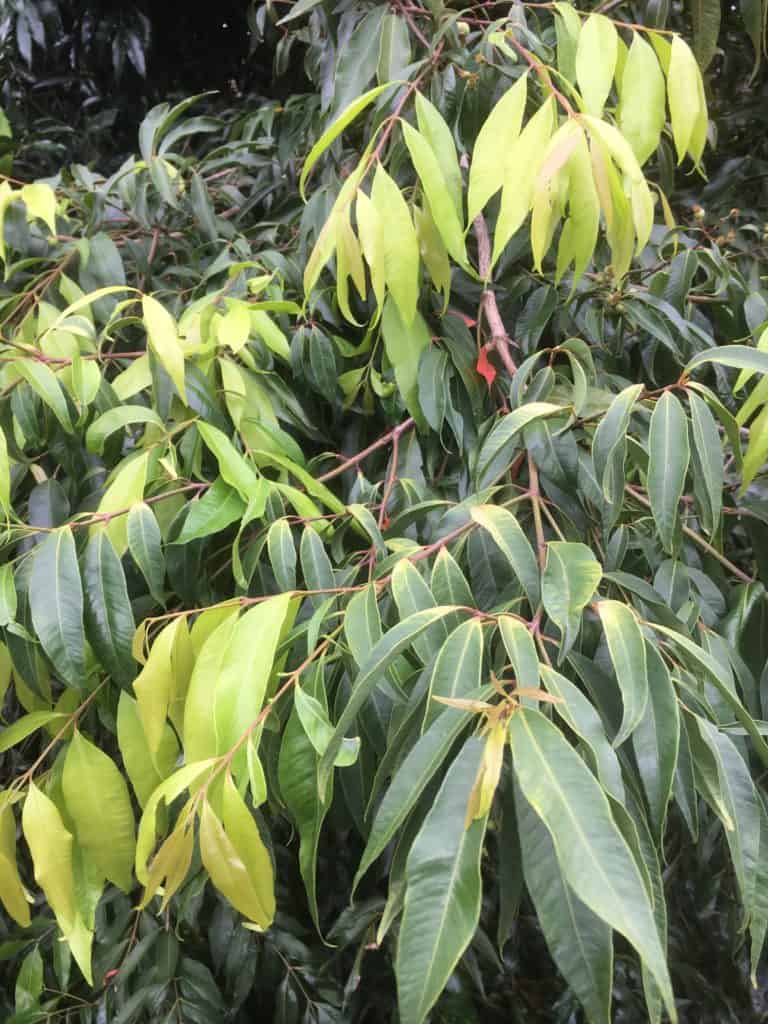 Waterhousea floribunda (summer) in our garden
Waterhousea floribunda (summer) in our garden
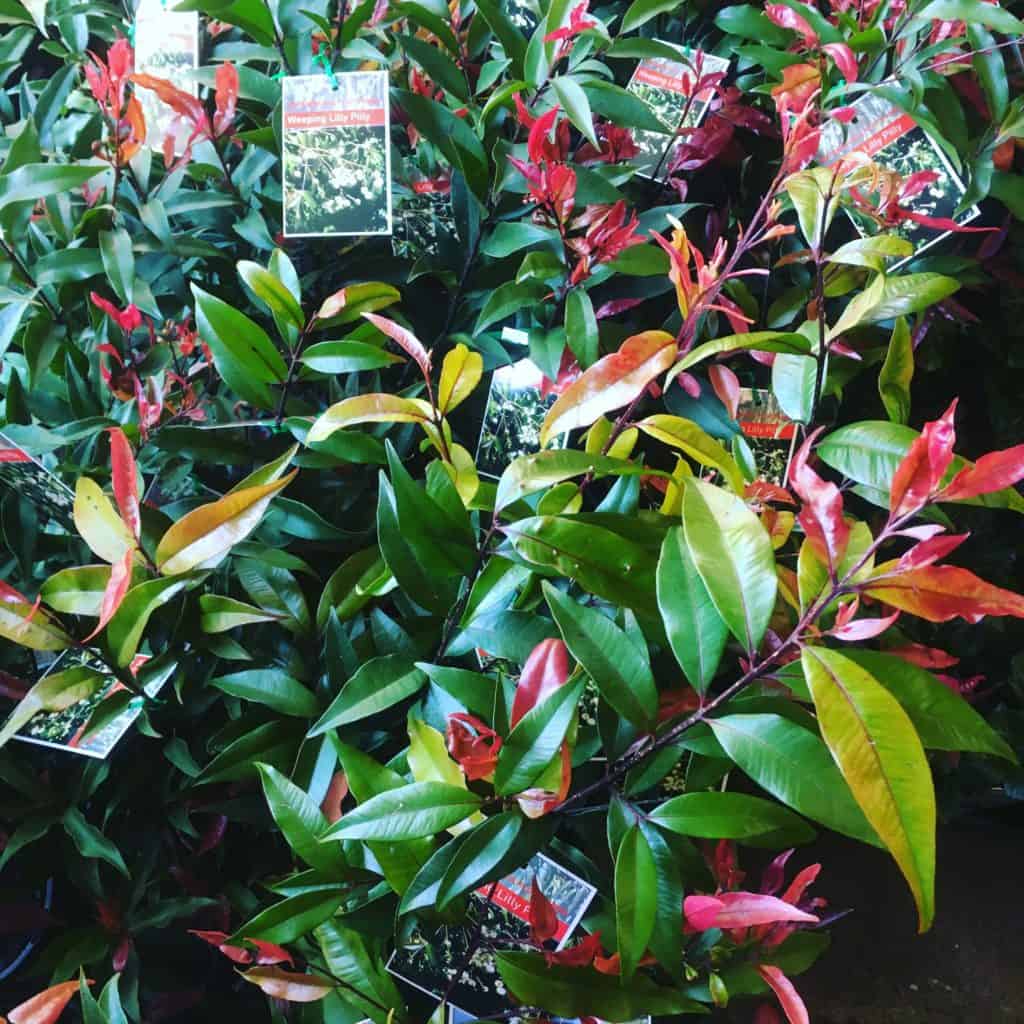 Waterhousea floribunda (Winter) our nursery
Waterhousea floribunda (Winter) our nursery
Sygygium Australe- Brush Cherry
Syzygium australe (Brush Cherry) is a fast growing small tree. Like all the other lily pillies it has very attractive deep green foliage. The new growth is red, in summer it also produces small white fluffy flowers like the Waterhousea. Like the Acmena species, the mauve berries that follow are edible. If left unpruned Syzigium will grow 4-6m (13-20ft) tall.
Brush Cherry is well suited for formal and informal screens. It responds exceptionally to pruning. Like Waterhousea it can also be grown very effectively in pots on a patio or porch. Syzigium is a very versatile plant and can also easily be turned into topiary, or standards.
This is the fastest growing of the lilly pilly’s mentioned. We prefer to use this for screens/hedges over 2m (6.5ft). We plant about 60cm (2ft) apart. If wanting a screen 3-4m (10-13ft) plant them 1-1.5m (3.5-5ft) apart.
If you’re interested in propagating your own, here’s our propagation guide for Syzygium
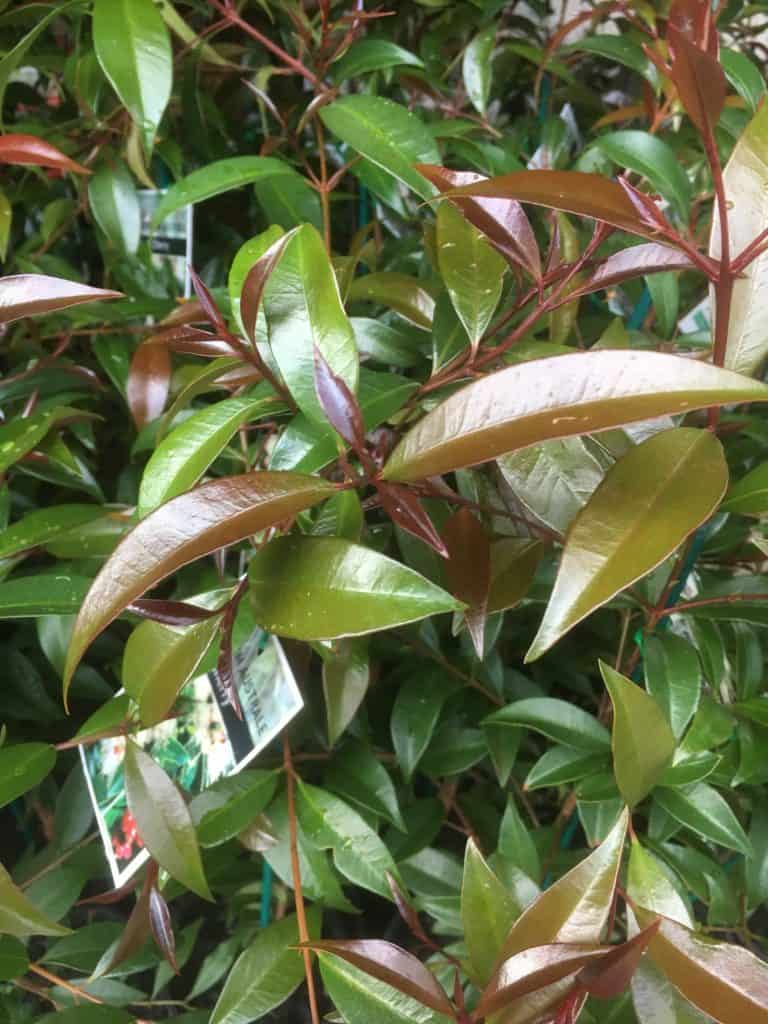 Syzygium australe in our nursery
Syzygium australe in our nursery
Camellia
Camellias are popular the world over. Most often they are planted as small trees or large shrubs grown for the myriad of striking flowers that are produced during the coldest months of the year. Camellias have 1000’s of named varieties you’re bound to find a perfect one for you.
Camellias are much more slower growing than other types of hedging plants on this list. That of course, can be a blessing when the hedge is mature and requires far less pruning to maintain. The leaves are always bright and glossy and even when not in flower look spectacular.
Sasanqua camellias are probably the most common for hedging although in more shaded areas you can use japonicas. Camellias like acidic soil, they will benefit from feeding a specific Camellia/Azalea fertiliser, or cow manure. Camellias can also be used in large pots on patios and porches to provide privacy.
Because there are so many varieties heights vary from 1-6m (3-20ft) so check you’re labels when buying. Camellias can be used as either a formal or informal hedge/screen.
As there are so many varieties of differing heights there will be differing spacing requirements. Our personal favourite is “yule tide” it grows to about 3m (10ft). We have planted our camellia “yule tide” hedge with about 60cm (2ft) spacing, we hope that the plants will form a hedge about 1.8m(6ft) high.
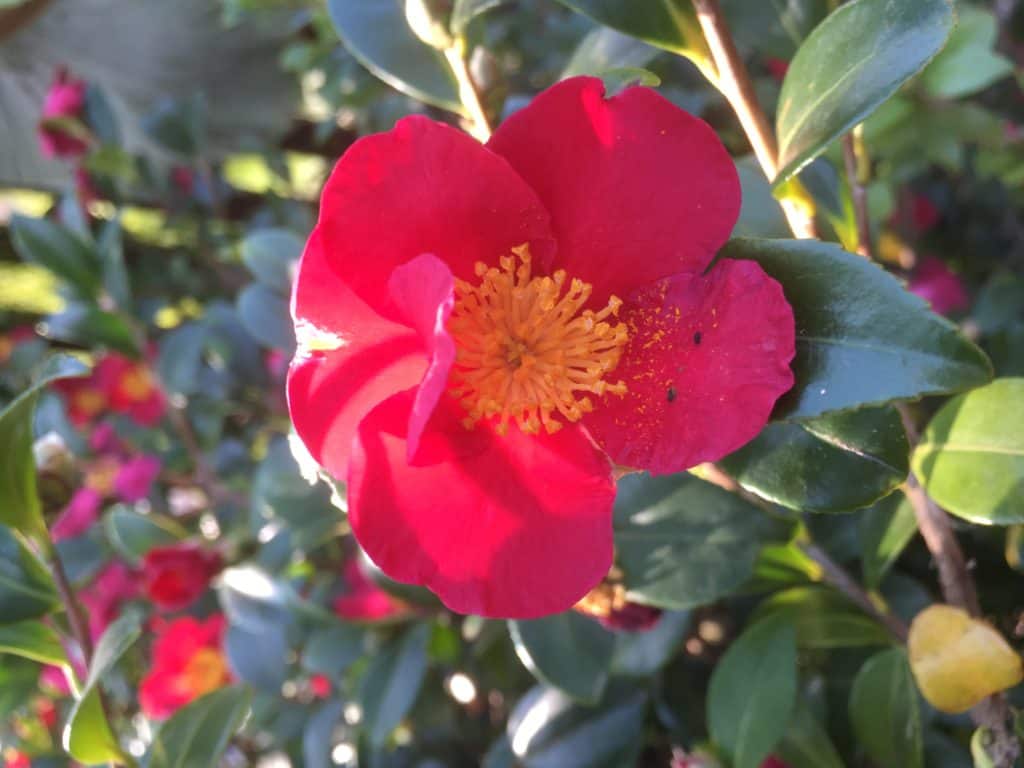 Camellia “yule tide” our hedge
Camellia “yule tide” our hedge
Photinia
Photinia’s are another very popular hedge/screen plant. They are grown for their dense growth habit and striking red foliage. In spring they produce dainty white flowers. There are currently many differing hybrids available for purchase. There are 2 main varieties that we see available in our local area: Photinia robusta and Photinia glabra rubens.
Photina robusta has a larger leaf and can become a much larger shrub/tree 8m (26ft). It can therefore be grown into very large privacy screens or even windbreaks. Whilst it can grow to 8m, with regular pruning can easily be maintained down to a 1.5m (5ft) X 1.5m (5ft) hedge. We find photonia robusta to be a proven performer.
Photinia glabra rubrens is a smaller growing variety. Like robusta the new growth is bright red. We attempted to plant this as a hedge along our driveway, however the plants didn’t thrive and we replaced with lilly pilly’s. We have seen it thriving it other peoples gardens, but for a privacy screen we would stick to a variety of photinia robusta.
Spacing when planting should be about 60cm (2ft)- 1m (3ft) for a hedge 2m (7ft) high. Of course if on a larger property you could stretch the distance out to 3m (10ft) spacings if desired. Photina’s are also able to be grown in large containers, feed with a control release fertiliser and repot every other year.
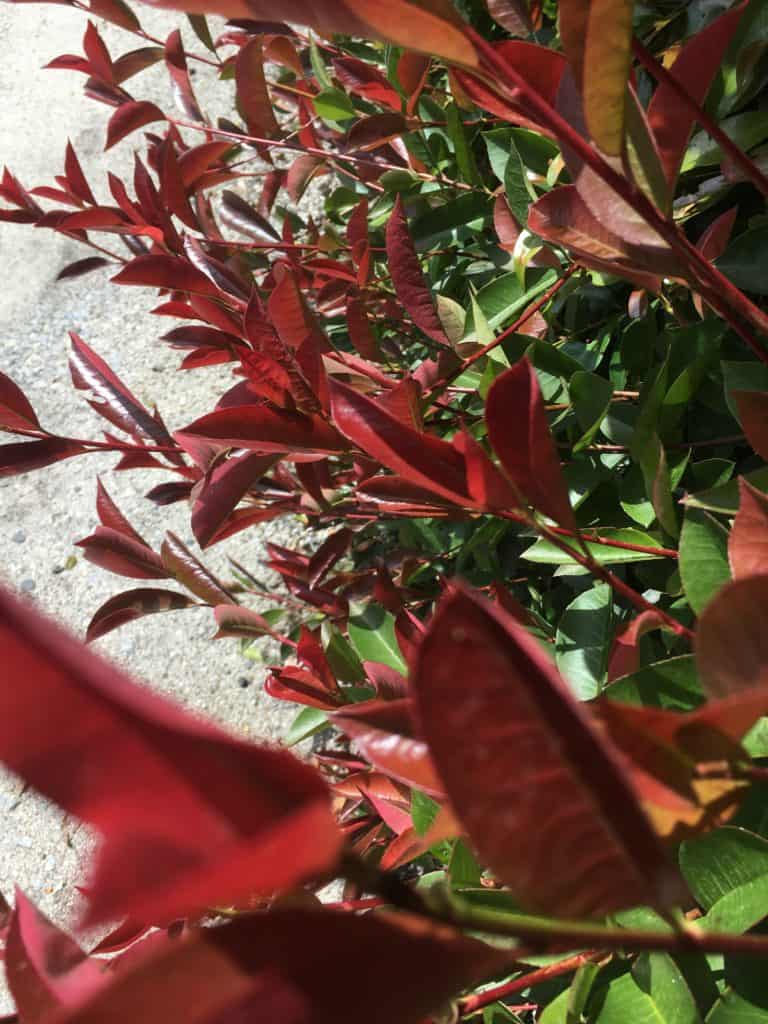 Our photinia hedge
Our photinia hedge
Ligustrum
Ligustrum has fallen out of favour in our area recently, but for years it was a very popular choice. The variety we use here around Melbourne, Australia is known as “box leaf privet”. Ligustrum is a plant you might find in your grandmas garden- meaning it’s an old fashion plant. While ligustrum may be considered old fashioned, if you need privacy fast, this might be the choice for you.
Ligustrum undulatum or box leaf privet is a very fast growing shrub, it can form a nice dense hedge up to 3m (10ft) in height. Box leaf privet is very versatile and can be kept much shorter if desired, it also makes great topiary. Leaves are small and appear light green when new and age to a deep green. In summer small insignificant white flowers are produced. This is a non-invasive form of ligustrum.
The beauty of ligustrum undulatum is that it can be neglected for years and returned to its former glory with a hard cut back. This for me makes it very worthy of this list. While it might not have the variety of colours that pittosporums do, the ability to cut it back hard, coupled with it’s fast growing habit make it a winner in our book. Oh, and it handles our hot aussie summers no problem!
When spacing ligustrum undulatum we like to go really close, about one plant every 30cm (1ft). Ligustrums are a fast growing plant and should be available for purchase relatively cheaply. If you need a large number they are easy to propagate yourself, check out our guide.
 Ligustrum in our nursery
Ligustrum in our nursery
Luma
Luma apiculata- Chilean myrtle is another old fashioned hedge plant. Like ligustrum it is fast growing, small leaved and green. It also produces small white flowers in late summer, although these put on quite a display. The benefit that luma has over ligustrum is its very attractive trunk. This can be handy if you desire foliage up at head height but would prefer a more open look further down.
If that is the look you desire, you allow the plant to grow to the desired height along the main stem. You then strip the branches off the stem, ripping out the branch bud. This will stop the branch from re-shooting. Then the remainig upper foliage can be pruned and the beautiful trunk of the plant is left exposed.
If growing into a dense hedge it should be clipped regularly from an early age. Luma is also a nice choice for container growing on patios and balconies. It can be fromed into perfect standards using the above method to expose the stem. I’ve seen some beautiful specimens with multiple stems and multiple balls coming form the same plant.
Luma can be used to form hedges up to 5m (16-17ft) although 2-3m (6.5-10ft) is more common. Spacing the plants 2 per metre (3.5ft) will form a thick dense hedge. Luma can dry out in hot weather so be mindful of that. Avoid planting near large trees that absorb a lot of the surrounding soil moisture.
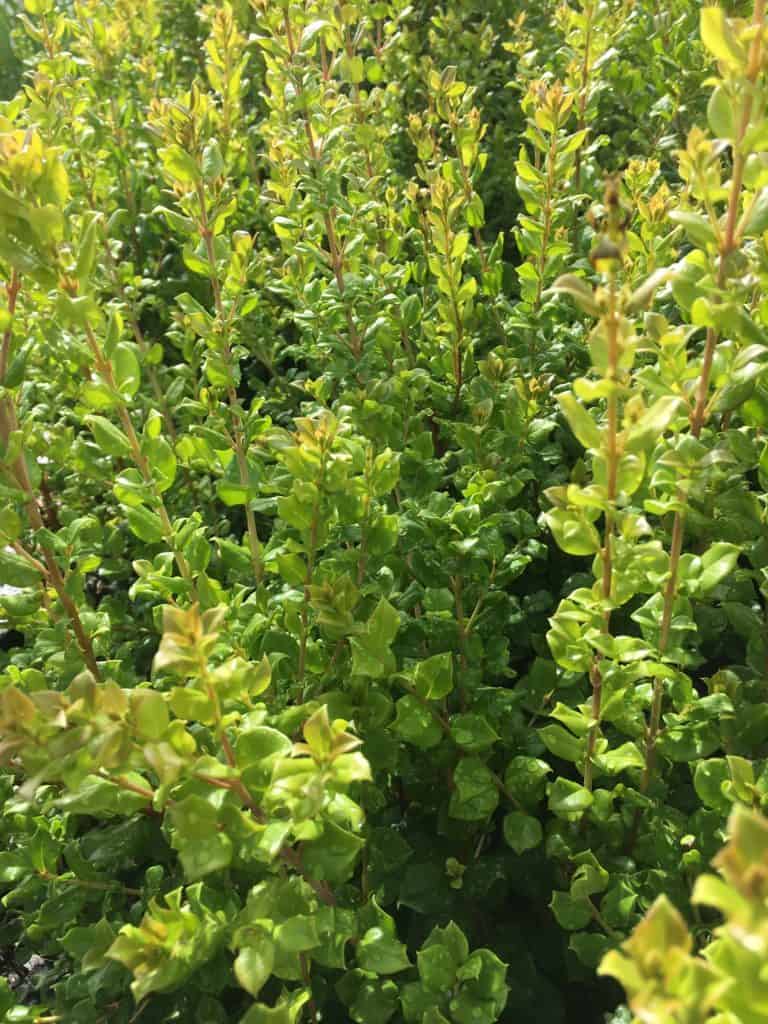 Luma apiculata in our nursery
Luma apiculata in our nursery
Laurus- Bay tree
Laurus nobilis or Bay tree, yes, the same tree that gives us the humble bay leaf used to flavour many a spaghetti dish. Bay trees make fantastic hedges and privacy screens. The grow really fast, are evergreen and have quite attractive foliage. And they can be used in cooking! Winner, winner chicken dinner.
The foliage on the bay tree starts as a light green and as the leaf ages it becomes a really deep green. The foliage emits quite a pleasant fragrance. In spring it produces small yellow flowers, which bees love. Bay trees are a vigorous grower exceeding heights of 10m (33ft) if left untrimmed.
We have a nice screen here at home which we easily maintain at about 1.8m (6ft). To keep it at this height we trim the hedge twice a year.
Bay trees are naturally bushy and the spacing can be 1 plant every metre (3-4ft). If you want to keep the hedge really narrow you could move the spacing closer together. Bay tree is another great choice for large pots on balconies, porches and verandah’s. Much like luma it can also make a great looking standard.
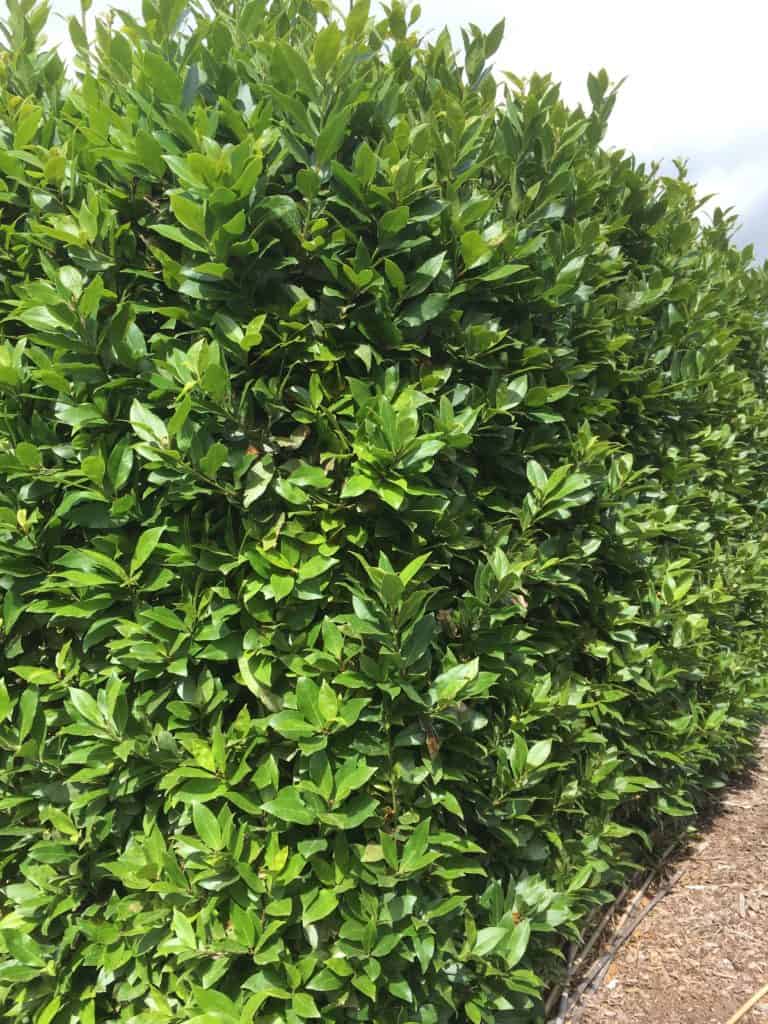 Laurus nobilis-Bay tree, Our hedge
Laurus nobilis-Bay tree, Our hedge
Pittosporum
Pittosporum have been an incredibly popular hedge/screen plant choice here in Australia for quite a long time. There are now so many varieties available on the market. Pittosporum are very fast growing.
Pittosporums that are grown as a screen will usually grow to about 3m (10ft) in height and about 2m (6.5ft) wide. When planting a hedge of pittosporum it’s very important to prune it from a young age. Quite often people will let the hedge grow to the desired height and then begin prunning, if this is done, the pittosporum tend to just look like scragally trees at the same height.
There are 2 main types of pittosporum in cultivation that are used for hedging/screens.
Pittosporum tenuifolium which has an incredible number of named varieties on the market. Pittosporum tenifolium has a smaller leaf and is more suited to formal hedges and screens, and it requires regular maintenance to maintain compact bushy habit.
The other is pittosporum eugenioides, this variety is much more suited to more informal screens and larger properties. Eugenioides has a larger leaf and can be left without pruning, provided there is adequate space. Both varieties come in varying leaf colours as well as variegated options available.
When planting pittosporum tenuifolium, space the plants about 2 per metre (1 every 2ft) and start pruning the hedge when it’s 1/2 the height you ultimately want. Pittosporums can also be used in large pots on balconies and patios. My personal favourite is “green pillar” and “screenmaster”.
Pittosporum eugenioides can be planted 1-2m (3-7ft) apart. The further apart you plant the trees the larger they will grow.
Climbers
These climbers will need a structure to climb on. These 3 excellent privacy climbers can also be grown in pots.
Ficus pumila-Climbing fig
We have climbing fig along the fences surrounding our courtyard and my goodness it is spectacular all year round. There are always different shades of green and it’s so lush and full. No one can see through, it’s perfect.
Climbing fig is slow growing in our climate, at least to start with. Once it’s established it becomes far more vigorous. The new growth on young plants has a much smaller leaf than the leaf on a mature plant, when the plant is young they can be quite frost sensitive. But if you can protect it for a few seasons, it’ll be able to withstand frost easily. Temperatures here can get down to -5C (23F).
We easily established ours on a 1.8m (6ft) high picket fence. The slates on the fence had large gaps that passers by could see directly into our courtyard. It took 3-4 years for full privacy to be acheived, but Gee was it worth it!
Maintenance is easy. We trim it once a year in late autumn. Another bonus ficus pumila is that it can be grown in shaded areas.
We planted ours 1 per 2m (7ft) and it has totally covered the fence. You could plant them closer together for faster results.
Climbing fig can be used on verandah’s, balconies and porches in pots. It will require a trellis or something to climb onto. It will root onto any surface so be sure you really want it! ‘Cause once it’s on a surface it will be very difficult to remove.
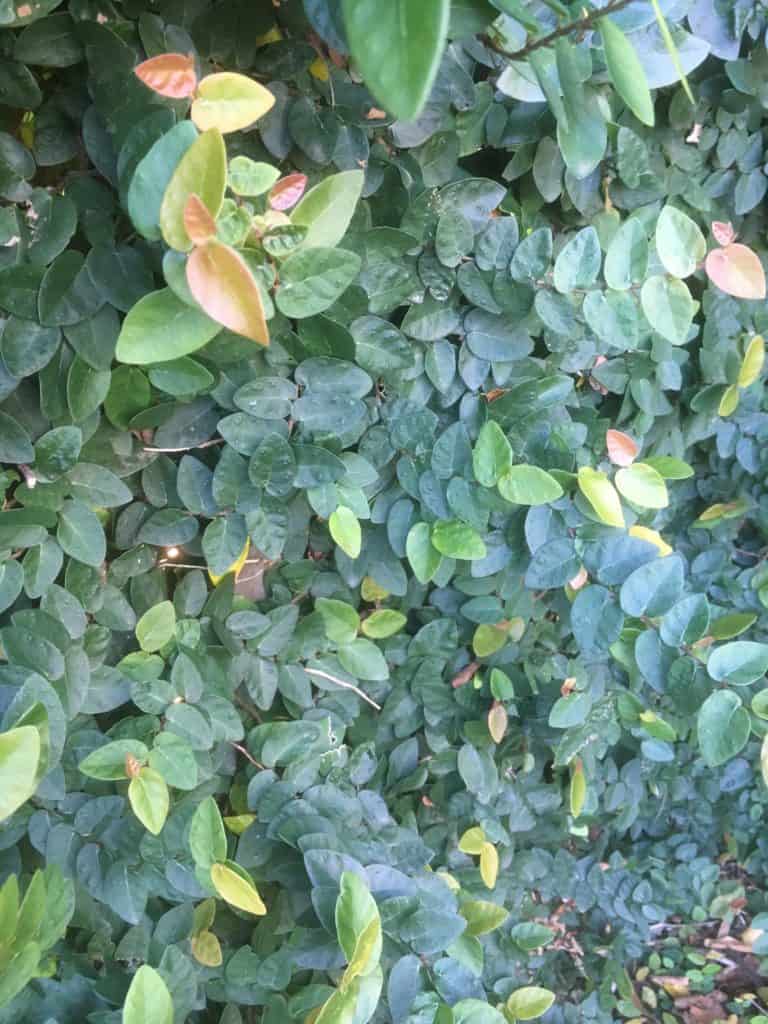 Ficus pumila in our courtyard
Ficus pumila in our courtyard
Trachelopspernum
Trachelopernum asiaticum, known as Japanese star jasmine is our favourite. It’s a striking evergreen climber. During spring it produces masses of highly fragrant white flowers that age to yellow. The foliage ages to a deep dark green. Trachelospernum asiaticum is the hardiest of the trachelospernums.
Japanese star jasmine will require a structure to climb up. Unlike the climbing fig it will not root onto the structure it needs to wind its way through and around the structure to hold on. Trellis and wire provide a suitable climbing platform for trachelopsernum.
Maintenance is easy. While establishing it as a screen just give the probing vines a helping hand weaving through the structure you’ve set up. Once established a prune once a year is all you need to keep it in check.
Trachelospernum asiaticum will climb at least 6m (20ft) X 6m (20ft) if given the time. In our climate it’s fairly slow growing. It’s taken us about 4 years to climb 2m (7ft) up a trellis and provide a thick privacy screen. Having said, we don’t nurture our plants so much once they’re in, they almost have to fend for themselves! So with regular deep watering and feeding, you should be able to achieve faster results. With it’s low maintenance requirements and striking look it’s been well worth the wait.
If using to cover a wide area I would plant them every 1m (3.5ft) apart. This will ensure a nice full privacy screen reasonably quickly. Can also be planted into large containers on verandah’s, balconies and patios.
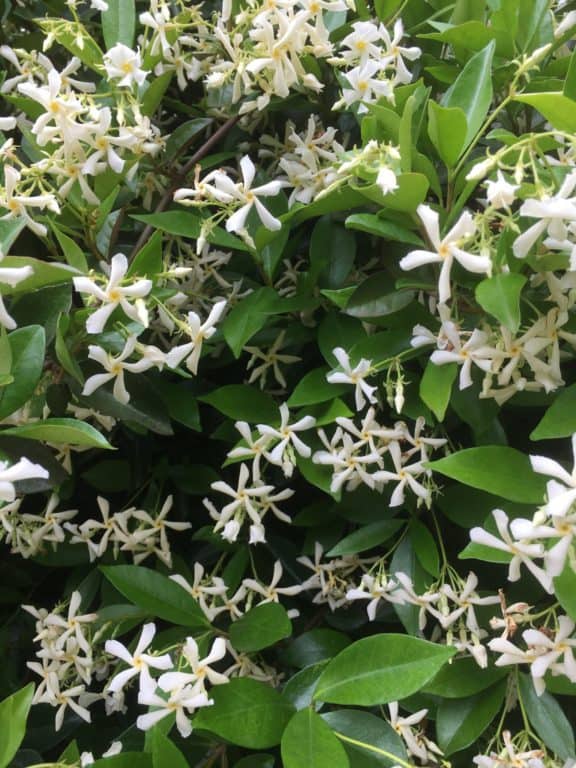 Japanese star jasmine full of flower
Japanese star jasmine full of flower
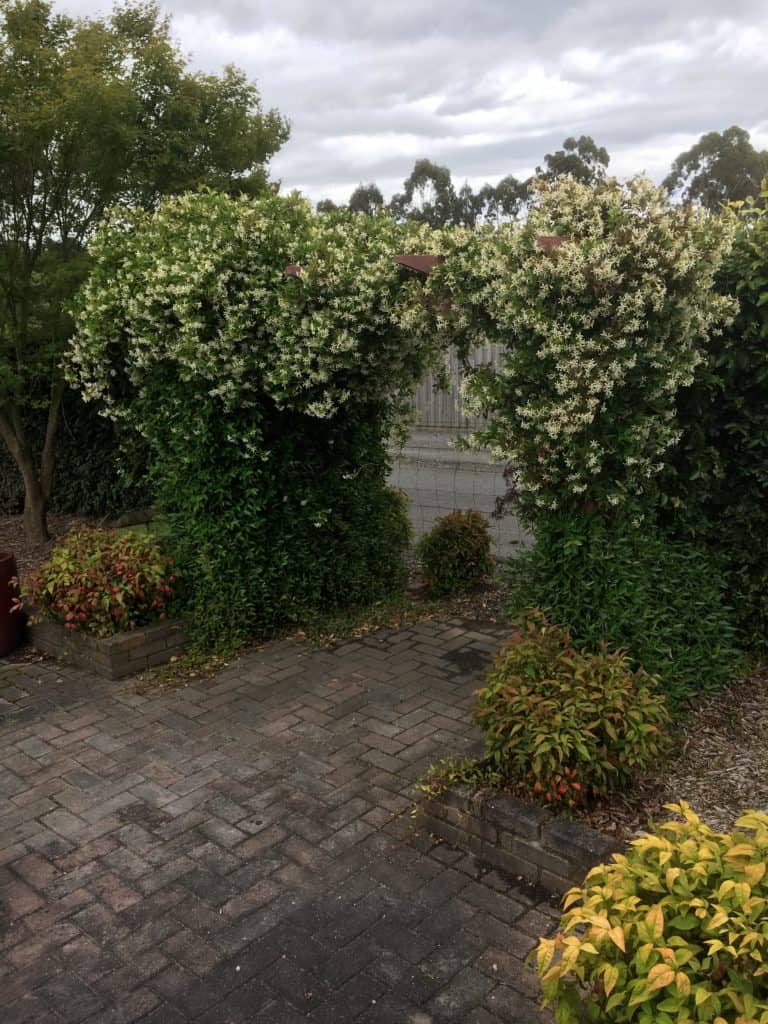 Japanese star jasmine climbing our arbor
Japanese star jasmine climbing our arbor
Hardenbergia
Hardenbergia commonly referred to as ‘happy wanderer’ is a twinning evergreen climber. The most commonly grown is hardenbergia violacea. It produces masses of purple pea like flowers from winter into spring. Sometimes it’s known as false sarsparilla or purple coral pea.
There are two other great choices, hardenbergia violacea ‘alba’, which produces white flowers and hardenbergia violacea ‘roses’ which produces soft pink flowers.
Hardenbergia is an Australian native making it very hardy. It loves to climb and can sometimes become leggy, to avoid this, prune the plant after it has finished flowering for the season. This will ensure nice dense privacy growth.
Like both the fig and trachelopsernum, hardenbergia will require a structure to climb up. To establish a fast privacy screen plant 1-1.5m (3-5ft) apart.
Can be grown in large containers/pots on balconies, patio’s ect. Feed with an Australian native specific plant fertiliser.
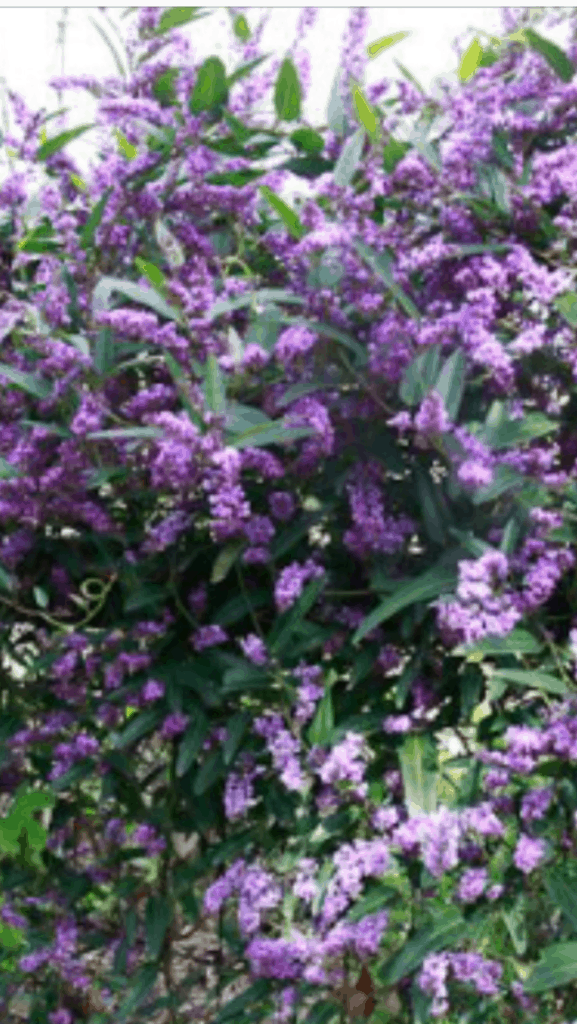 Happy wanderer covering fence
Happy wanderer covering fence
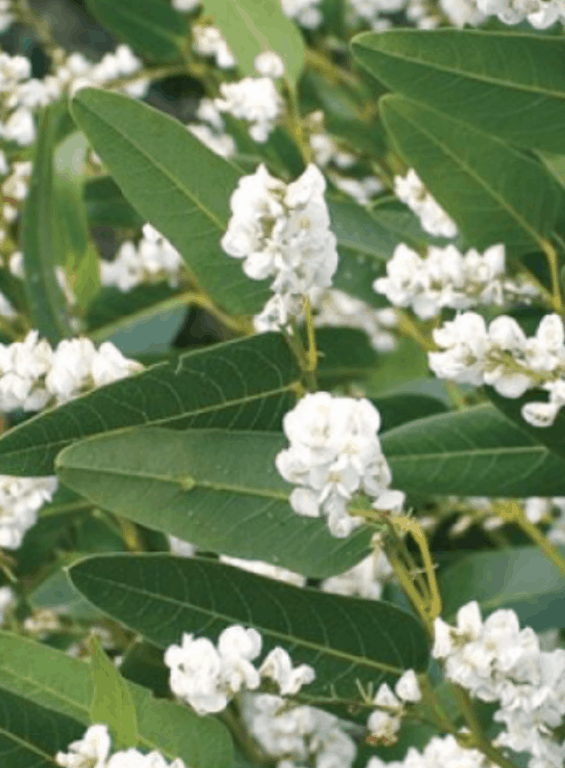 Hardenberia violacea ‘Alba’
Hardenberia violacea ‘Alba’
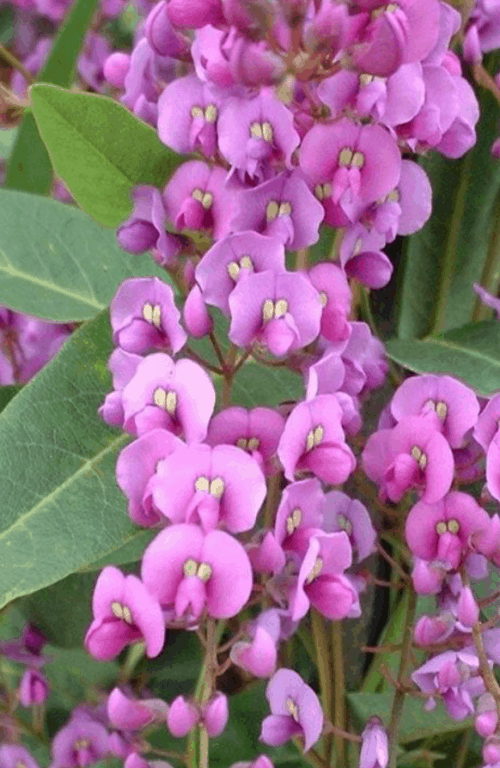 Hardenberia violacea ‘Rosea’
Hardenberia violacea ‘Rosea’
